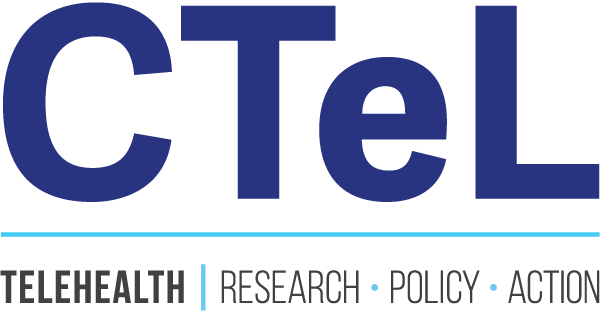Addressing the Maternal Healthcare Crisis: Insights from March of Dimes’ 2024 Maternity Care Deserts Report and the Role of Telehealth
Access to maternal healthcare in the United States remains an urgent public health issue, as highlighted by March of Dimes in their 2024 report, Nowhere to Go: Maternity Care Deserts Across the US. The report exposes the extent of maternal care deserts—areas with limited or no access to maternity services—and underscores the growing need for collaboration between policymakers, healthcare providers, and community leaders to address this alarming crisis. One of the key solutions proposed to bridge this gap is the use of telehealth to expand access to care for those living in underserved areas.
Understanding Maternity Care Deserts
A maternity care desert is defined by the absence of essential maternal healthcare services. Specifically, communities are classified as maternity care deserts if they lack hospitals and birth centers offering obstetric care, have no obstetric clinicians available, and include a significant portion of women of reproductive age without health insurance. Unfortunately, the 2024 report reveals that 35.1% of U.S. counties—impacting 2.3 million women of reproductive age—are classified as maternity care deserts. Furthermore, 150,000 babies are born to individuals living in these areas annually.
Communities fall into one of four categories—maternity care desert, low access, moderate access, or full access—based on the availability of hospitals, birth centers, obstetric clinicians, and insurance coverage. Low and moderate access areas have some maternity services but often face obstacles such as fewer healthcare facilities or a large percentage of uninsured women. These conditions directly affect maternal and infant health, especially for women in rural or underserved areas.
Why Maternity Care Deserts Matter
The impacts of living in a maternity care desert are profound. Women in these areas are more likely to experience higher rates of maternal morbidity and mortality, preterm birth, infant mortality, and low birth weights. The closure of obstetric units, which has accelerated in recent years, has only worsened the situation—roughly 4% of these units have shut down in the past two years alone.
These statistics are troubling, particularly in the wake of the 2022 Supreme Court decision to overturn Roe v. Wade, which has further complicated access to reproductive and maternal healthcare. Many states that enacted abortion bans also have some of the highest numbers of maternal care deserts, compounding the challenges for individuals seeking comprehensive healthcare in these regions.
The Role of Telehealth in Addressing Maternity Care Deserts
While the challenges posed by maternity care deserts are significant, telehealth offers a promising solution for providing access to maternal healthcare in underserved areas. Telehealth can help mitigate the negative outcomes associated with living in a maternity care desert by allowing pregnant individuals to receive necessary medical consultations and support remotely.
Here’s how telehealth can play a pivotal role in addressing these deserts:
Remote Prenatal and Postnatal Care: Through telehealth, pregnant individuals can attend virtual appointments for routine check-ups, consultations, and screenings with obstetricians, midwives, or other specialists. This is particularly beneficial for those who live far from healthcare facilities, as it reduces the need for long travel times and provides ongoing monitoring throughout pregnancy.
Monitoring Chronic Conditions: Many women in maternity care deserts suffer from chronic conditions like hypertension or diabetes, which can complicate pregnancy. Telehealth enables remote monitoring and early intervention for these conditions, ensuring timely care and reducing the risk of complications.
Mental Health Support: Access to mental health services is often limited in maternal care deserts. Telehealth can offer virtual counseling and mental health support for women experiencing conditions such as postpartum depression or anxiety, improving overall maternal well-being.
Education and Virtual Classes: Telehealth platforms can provide virtual childbirth education classes, breastfeeding support, and parenting resources, equipping mothers with the knowledge and confidence they need during pregnancy and postpartum, regardless of location.
Emergency Consultations and Remote Diagnostics: For high-risk pregnancies, telehealth can connect patients with specialists in real time for emergency consultations, while remote diagnostic tools and wearable technologies enable continuous monitoring of vital signs and fetal health.
The integration of telehealth into maternity care not only addresses gaps in service delivery but also creates a safety net for women who otherwise might not receive timely or adequate care. Expanding the use of telehealth for maternal care in rural and underserved areas could be a critical step in reducing maternal mortality and improving birth outcomes.
Policy Recommendations to Expand Telehealth for Maternal Care
In their 2024 report, March of Dimes offers several policy recommendations that underscore the importance of telehealth and digital innovation in addressing maternity care deserts. These recommendations include:
Investing in Digital Technologies: Policymakers are urged to invest in the development and expansion of telehealth infrastructure, particularly in rural areas where internet connectivity and digital tools may be limited.
Telehealth Reimbursement: Addressing reimbursement challenges is crucial for telehealth adoption. Expanding Medicaid coverage and improving reimbursement policies for virtual maternal care visits will ensure that telehealth is a viable option for both providers and patients.
Cross-State Licensing: Telehealth for maternal care could be greatly enhanced by addressing regulatory barriers such as cross-state licensure, which would allow providers to treat patients across state lines, particularly in rural and underserved regions.
Collaboration Is Key
Improving maternal healthcare in the U.S. is a complex challenge that requires coordinated efforts from multiple stakeholders. The report calls for cooperation between government agencies, healthcare organizations, industry leaders, and community advocates to create lasting change. Telehealth is a critical component of this strategy, offering an innovative solution that can be scaled to meet the needs of women living in maternity care deserts.
By expanding telehealth access, implementing equitable policies, and fostering public-private partnerships, we can ensure that all mothers and babies receive the care they deserve—regardless of their geographic location or socioeconomic status.
As March of Dimes concludes, “The solutions to improving access to maternity care are as diverse as the barriers." Telehealth, alongside other targeted interventions, has the potential to overcome these challenges and safeguard the health and well-being of mothers and infants nationwide.

